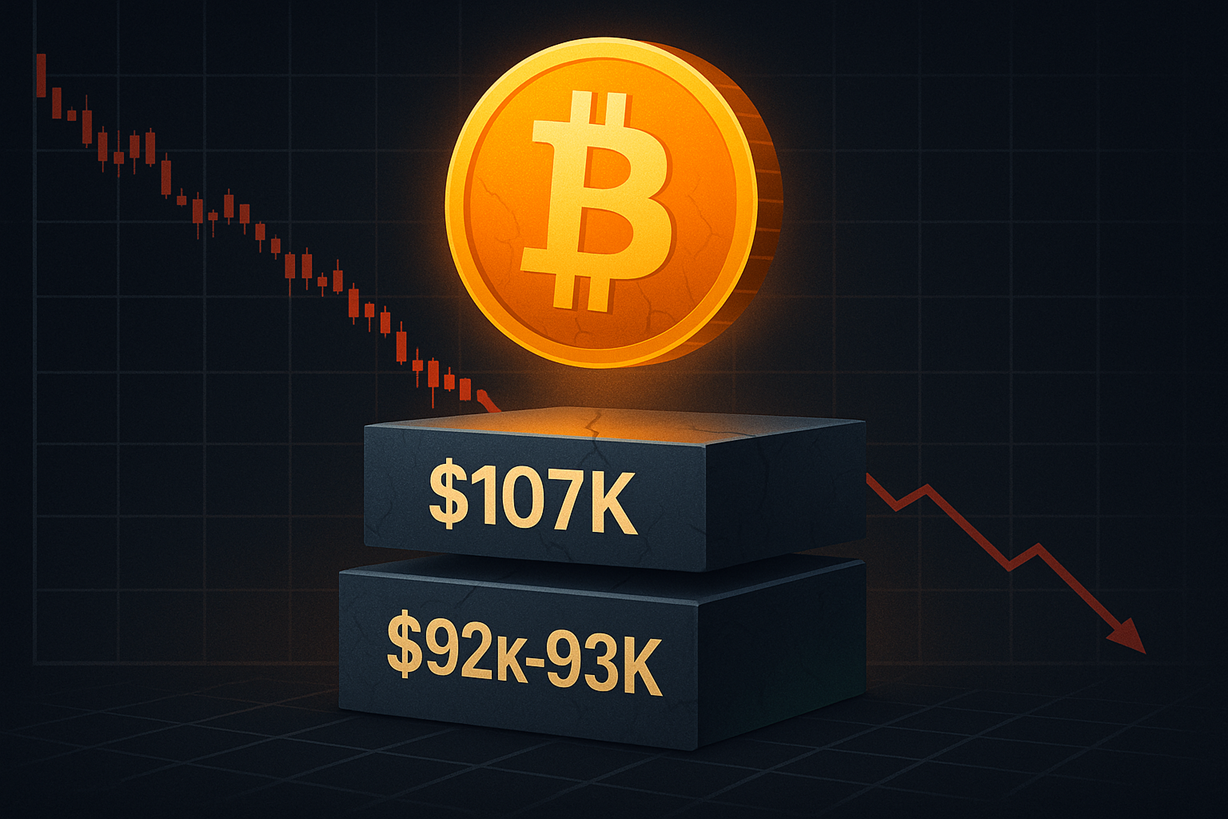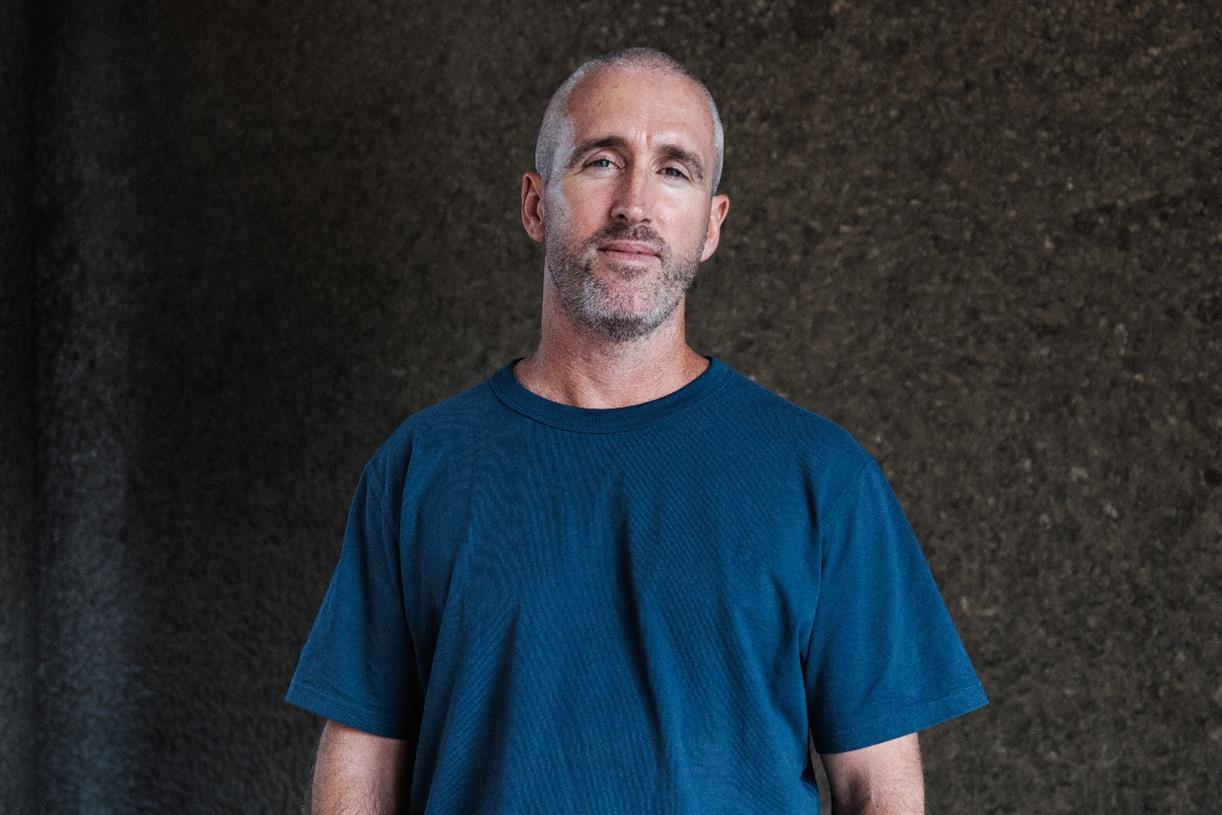Low interest rates and loneliness: the origins of the pandemic crypto boom
Glauber Contessoto, also known as “Pro,” records a video about Dogecoin. | Image: This Is Not Financial AdviceThis Is Not Financial Advice and Easy Money attempt to explain the extremely online financial mania. Their very divergent takes show how...
/cdn.vox-cdn.com/uploads/chorus_asset/file/24856978/Screen_Shot_2023_02_07_at_5.24.13_PM.png)
Finance is often taught like math — as though it’s a series of fixed and inexorable rules. But if that were true, bank runs wouldn’t occur.
Psychology is at least as important to regular finance as balance sheets. The point of being able to transact in abstract tokens, whether dollars or Dogecoin, is to be able to engage in a relationship with a stranger with some degree of confidence. All money is about community. Money is also, to some degree, about correctly predicting the future; your dollars or Dogecoin will continue to be worth a predictable amount when you engage in future transactions. Investing in particular is about the future, namely, trading present money for presumed future returns; the crucial step here has to do with expectations. The psychological element here is most obvious in boom-bust cycles.
Speculative manias have a long history, and I look forward to the economist who tries to interpret the most recent retail investing boom in light of Hyman Minsky’s hypothesis that market-based financial systems are often unstable and prone to crisis. Until then, we have two efforts — a book and a film — to deal with the most recent cryptocurrency boom and bust cycle.
“I hate that I’m stuck in this position, but in the future, one day, I’m going to be really happy, and I wanna manifest that.”
Unlike some other efforts to document the boom of retail investing, This Is Not Financial Advice isn’t a cheap content grab. This beautifully shot and scored documentary from Chris Temple and Zach Ingrasci is a genuine, if slightly naive, piece of art.
Temple and Ingrasci follow several retail investors as they explore the markets. We are introduced to Senay Kenfe, a Long Beach, California, activist who tries to demystify investing through investing club-style educational meetings; Rayz Rayl, of Sellersburg, Indiana, who quit teaching math to play professional poker after he made more than double his teacher’s salary gambling and moved into day trading from there; and Kayla Kilbride of Seal Beach, California, who makes TikToks to try to demystify finance to other people and document her own journey of learning how investment works.
The heart of the documentary, though, is Glauber Contessoto, better known as “ProtheDoge” (Twitter) or “The Dogecoin Millionaire” (YouTube).
“I hate where I’m at right now,” Contessoto says at the beginning of the documentary. “I hate that I’m stuck in this position, but in the future, one day, I’m going to be really happy, and I wanna manifest that.” And to that end, on February 5th, 2021, Contessoto takes everything out of his bank account, sells all his stocks, maxes out two credit cards, and throws it all into Dogecoin. This is $180,000.
“I could cash out right now and go about my life, but I would feel like I’m letting everybody down.”
Contessoto’s life throughout the documentary is a striking example of cruel optimism, where what you want prevents you from actually flourishing. At one point, his Dogecoin account is worth $2.2 million, but he has only $162 in available cash. He is living in a shitty apartment, which is furnished largely with things he picked up from the street or built. At several points, friends, YouTubers, and his own mother urge him to sell at least some of his Dogecoin holdings. But he won’t. “I could cash out right now and go about my life, but I would feel like I’m letting everybody down,” he says.
And why does Contessoto think that Dogecoin is worth betting on? Well, Elon Musk says it’s the future of the financial system. The branding is good. Contessoto likes the memes. Trying to explain how currency works isn’t going to sway him. Those explanations are complex, nerdy, for chumps; his explanation is simple.
Besides, Contessoto knows that the existing financial system doesn’t work for him because he doesn’t have a social security number. (He and his family immigrated from Brazil.) At one point, heartbreakingly, he describes all the jobs he’s been fired from because he doesn’t have a social security number; in a scene with his mother, he displays a childhood photo where he is playing soccer barefoot. His vision board in his house is about success: “entrepreneur,” “true innovators believe they can change the world,” “money,” and “go take a leap” are among the text peppering it, along with a photo of a Tesla Cybertruck.
Part of what’s striking about Contessoto is how lonely he seems to be; he is usually pictured alone. Though we do see him with friends and family, most of his time seems to be spent in his apartment by himself. At one point, he has a birthday party and is rearranging his apartment to host it — it’s the most people he’s ever had over to his place, he says.
Financial decision-making was often about investors’ self-perception, and emotions tended to outweigh math
A notable contrast in the documentary is Senay Kenfe. Kenfe spent 11 years as a warehouse worker and lived with five roommates, putting 70 percent of his income in the stock market. He likes “boring” investments. When he was nine years old, he told his mom that his goal was to buy the houses in his neighborhood so he could sell and rent them to his friends.
We see Kenfe meeting with people in his community in real life to try to educate them about investing. He talks about “buying back the block” and reinvesting in his own community. He shows the camera the apartment building he plans to buy in Long Beach, and when he does buy it, he puts a mural of Malcolm X on the side. Of all the people in the documentary, Kenfe seems the happiest by far. He is uninterested in cryptocurrency; he emphasizes the importance of boring investments.
Kenfe’s story echoes an older style of retail investing: investment clubs. During the 1990s internet bubble, sociologist Brooke Harrington documented these clubs, in which ordinary people pooled money so they could have accounts big enough to receive the attention of brokers. Before the advent of online trading, this was one of the main ways for retail investors to access the stock market.
A lot of Harrington’s findings will be familiar to the viewer of This Is Not Financial Advice: financial decision-making was often about investors’ self-perception, and emotions tended to outweigh math. Also, financial success wasn’t the thing that determined whether investors stayed in the market — some of the most successful investing clubs disbanded. The thing that mattered most for whether people continued to dabble in the stock market was whether they viewed themselves as investors.
Contessoto made and lost so much money as to render money meaningless
No one in This Is Not Financial Advice tied his identity more closely to his investments than Contessoto. His social media branding is specifically about his Dogecoin investment; the fan art he receives and hangs on his wall reinforces that identity. So even though Contessoto’s crypto account swings in ways that make me nauseated, he stays in the market. The crux of his social identity is his Dogecoin bet.
In the run-up to Musk’s appearance on Saturday Night Live, Contessoto is excited, and I want to scream — I watched the event and know already what will happen to him. That $2.2 million was his peak; closer to the end of the documentary, he’s down to $199,980 in Dogecoin. That’s still more than his initial investment, but he made and lost so much money as to render money meaningless.
At the end of the documentary, Contessoto moves to a three-bedroom apartment in Las Vegas. He’s made more than $690,000 in sponsorship deals on YouTube. Because he hasn’t touched his Dogecoin, his authenticity can be tapped for advertising. Contessoto outlines his long play: monetizing the attention he got from his Dogecoin bet with merch, a cartoon, and ad placement.
The documentary presents this as something of a happy ending, but Contessoto doesn’t seem to be any more embedded in a real community than he was in the beginning — his online community seems to be something for him to leverage for profit. He seems troublingly lonely.
There was a casino open all hours of the day, a casino you could get to from your own couch
In retrospect, it seems the pandemic threw gasoline on what was already a raging fire. A decade of low interest rates made startup land boom; in parallel, the crypto world boomed, too. But when covid struck, a one-two punch of Federal Reserve policy and the isolation and boredom of 2020 pushed more people than ever into investing.
Sports had been halted, so sports betting also ground to a halt. Nothing was going on. But there was a casino open all hours of the day, a casino you could get to from your own couch — and so crypto took off. And in the wake of the 2008 financial crisis, most people under the age of 40 already viewed the financial markets as a casino.
Easy Money, actor Ben McKenzie’s book written with journalist Jacob Silverman, was also born of pandemic loneliness. The book has its moments; McKenzie and Silverman can be charming company. McKenzie was, after all, inspired to write a book while high — and if there’s a single writer out here who hasn’t had their own version of this moment, I’d like to meet them. Of course the difference is that McKenzie did write it.
Curiously, though, for a book that often brushes against the social aspects of money, McKenzie seems not to understand the role community and loneliness play in cryptocurrency — even as he delightedly portrays the crypto skeptic community. Lurking under the Excel spreadsheets, there are what John Maynard Keynes called the “animal spirits.” Cryptocurrency in particular is moved by the animal spirits, as we observed in This Is Not Financial Advice.
McKenzie looked into crypto, and it was contempt at first sight
McKenzie gives the explanations that wouldn’t move Contessoto — the boring, complicated ones about interest rates, the problems with Bitcoin as a medium of exchange, and what a currency actually is. This all feels very dutiful and is accordingly dull: anarcho-libertarians, Silk Road, Bitcoin pizza, ICO boom, amen.
Easy Money picks up when McKenzie stops explaining cryptocurrency and tells us about how his pandemic went. He was in a bad way (“bored and depressed,” in his own words) and a friend from college who’d “given me the worst financial advice of my life” told him to buy Bitcoin in early 2021. McKenzie looked into crypto, and it was contempt at first sight.
McKenzie is convinced most crypto, maybe all crypto, is in fact a security, though this is hardly clear legally. (We will find out, though!) Regardless, like many people bitten by the crypto bug — whether skeptics, opportunists, or true believers — he couldn’t stop thinking about it. He read an article from Silverman called “Even Donald Trump Knows Bitcoin Is a Scam” and decided that he’d located a possible co-author. He nervously approaches the journalist and is rewarded with friendship, something he was in dire need of during the pandemic.
McKenzie makes the most of his celebrity, which gets him in the door in ways most journalists can only dream of. It also gives him valuable insight into the celebrity NFT bubble — after all, figuring out how to manage money in an uncertain business isn’t easy. I wish McKenzie had spent more time on the likes of actor-turned-VC Ashton Kutcher and the forays of various celebs into the Bored Ape Yacht Club and MoonPay; I suspect he’s got a pretty good bead on how IP works in Hollywood, and the best explanation I’ve heard for celebrity interest in NFTs has to do with owning the IP that properties could be developed from. Royalty checks are generally a steadier income stream than acting gigs, after all.
The sections where McKenzie meets other skeptics are the highlights of the book
Occasionally, though, McKenzie’s fame leads him on wild goose chases — a shaggy dog story about martinis with some self-proclaimed CIA guys makes me think he got conned by some fans.
Easy Money is a little scattered, and maybe trying to cover too much territory. There’s a chapter where McKenzie goes to El Salvador to see for himself how Bitcoin is doing there (not so hot, turns out!); a brief encounter with Celsius’ Alex Mashinsky where Mashinsky admits how few dollars are backing the crypto tokens; a long detour into the bizarre world of Tether; an interview with Sam Bankman-Fried where McKenzie, long accustomed to answering others’ questions, discovers there is an art to asking them.
The final chunk of the book feels shoehorned in — it is a rushed retelling of the Terra / Luna and FTX collapses. There are also some minor errors: Bankman-Fried, for instance, says he made his money doing arbitrage from Japan, not Korea, as the book has it.
The sections where McKenzie meets other skeptics are the highlights of the book; the crypto skeptics form a loose community that makes McKenzie feel less lonely during the pandemic. These portraits of internet randos committing acts of journalism on the fly — in newsletters, on Twitter, and on podcasts — are lively and enjoyable; you get the sense that the camaraderie McKenzie feels from these people is what really got him through the pandemic.
These financial communities are self-reinforcing — in crypto, members urge each other not to sell because HODLing benefits the wider group
I have been fascinated by crypto skeptics for quite some time; it is a kind of anti-fandom that pays just as much attention to the crypto world as the true believers do. (I follow cryptocurrency loosely because I think it’s hilarious, but I also view the existing financial system as a pretty good joke. I suppose that makes me a financial existentialist.) It’s a mistake not to have made these people the heart of Easy Money; they are vivid and compelling. Had McKenzie and Silverman approached the narrative differently, writing about the skeptics in more detail would have allowed them to explain tricky financial concepts in the narrative itself, rather than in boring textbook-like chunks.
But more to the point, crypto really is about community; the true believers aren’t wrong about that. It’s not the kind of community where I’d expect members to rearrange their schedules to let me cry on their couches because I’d just gone through a nasty breakup or to create a meal train because someone just had a kid; it’s more like the kind of community that forms around sports teams. (Before crypto, there were penny stocks and Mary Kay cosmetics.)
These financial communities are self-reinforcing — in crypto, members urge each other not to sell because HODLing benefits the wider group, as we already saw with Contessoto. They communicate through memes and in chat rooms, and they are always available, even in the middle of the night. I understand these relationships to be shallow, but they are relationships.
The skeptic community mirrors this; in fact, many true believers and skeptics are friendly. Smart crypto investors often root for skeptics because skeptics are highly motivated to find frauds — and if you do believe cryptocurrency is a meaningful technology, weeding out scams is necessary to leave the real innovation standing.
Finance isn’t just feelings and it isn’t just math
During the last crypto hype cycle, when many of us were stuck at home with nothing to do, online communities were a lifeline because our real ones were inaccessible. McKenzie’s experience with the skeptics — and his reverence for their work — suggests that he was among the people who stayed sane by finding a community online.
If McKenzie had kept his scope narrow — either on the community of crypto skeptics or as a memoir of his own pandemic-related involvement in the crypto world — the book would have been stronger. I can see an excellent book peeking out from under the one that exists, which is mediocre. Still, it’s a good effort for a first-time author, and McKenzie and Silverman are often quite funny on a line level.
Easy Money also provides crucial context missing in This Is Not Financial Advice. McKenzie points out Nobel laureate Robert J. Shiller’s notion of the naturally occurring Ponzi: a sustained rise in prices that happens because investors believe other investors will continue to go up. The documentary takes place during the era of low interest rates, an environment primed for the naturally occurring Ponzi — but it seems not to notice, the way a fish doesn’t notice water.
Without this context, This Is Not Financial Advice leaves viewers with the impression that gravity will never return to the markets — which demonstrably isn’t true, as the Fed rate hikes have shown already. As the money supply tightens, fewer people want to gamble; they need that money for necessities. What that means for crypto as well as the creator economy Contessoto is participating in is unclear.
Easy Money and This Is Not Financial Advice each seemed to be supplying context the other lacked. Finance isn’t just feelings and it isn’t just math; if you hope to be successful at investing — or even just understanding what’s happening in the economy — you need both. Maybe that’s what makes it so hard.

 Koichiko
Koichiko 
































